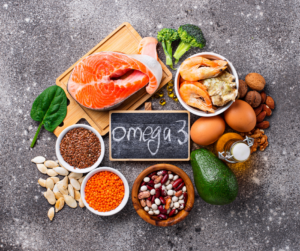By Claire Bacon, ACN, CNC
When it comes to the health of your child, every parent wants to make sure they grow up strong and healthy. Unfortunately, many of the foods marketed directly to children are anything but healthy. Are your kids asking for colorful cereal boxes or packaged snack items with cartoon characters?
Make no mistake, children are getting the message that food should have bright colors and images of their favorite characters. They want foods that also come with a song and dance. The programming kids are exposed to is purposely designed to make them think that way. It’s sad!
Old fashioned Moms and Grandmas know, sticking to nutrient-dense fruits, vegetables, protein, and healthy fats is the best way to support your child’s overall health. But, that’s not what is being served in schools. Today’s school lunches and snacks are filled with high amounts of added sugar, trans fat, and harmful additives. Such foods (like muffins, chips, and granola bars) are easy to grab when you’re on the go, but these really need to be minimized.
For the sake of your child’s health, read below for some nutritious choices!
1. High-Quality Dairy and Animal Protein
These foods contain rich sources of vitamins A, B, choline, and amino acids your child needs. That is, if he wants to build strong bones, a super-smart brain and keep his immune system working well.
- Organic, raw A2 milk
- Organic fresh cream
- Organic butter (great source of vitamin A)
- Pasture-raised eggs
- Pasture-raised or free range chicken and turkey
- Grass-fed beef
- Venison
- Wild-caught fish
Always buy organic, pasture-raised, or grass-fed when available!
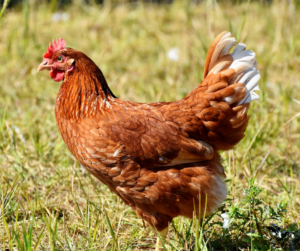
2. Phytochemicals from Naturally Colorful Foods
Phytochemicals (aka phytonutrients) are good because they prevent cancer development from DNA damage. They also help to repair mutated genes and promote healthy programmed cell death (autophagy). And it’s so easy to get these foods in your child’s diet!
Sweet potatoes are rich in phytochemicals and a great source of vitamin A. Orange sweet potatoes are rich in beta-carotene; whereas purple sweet potatoes are richer in anthocyanins. Beta-carotene and anthocyanins are naturally-occurring phytochemicals that give vegetables their bright colors. These nutrient-dense root vegetables can be cut up, tossed with coconut oil and made into oven-baked French fries. Their mild taste is perfect for kids!
Other examples of phytochemical-rich foods include:
- Carotenoids (mangoes, kale, tomatoes)
- Flavonoids (onions, tea, citrus fruit)
- Resveratrol (grapes, peanuts, cocoa)
- Ellagic acid (berries, pomegranate seeds, pecans)
- Phytoestrogens (soy and flax)
- Glucosinolates (arugula, Brussels sprouts, radishes)
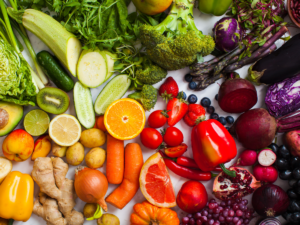
3. Nuts and Seeds
Did you know, nuts and seeds have so many health benefits! Both nuts and seeds contain healthy unsaturated fats, vital for normal growth and development. Fats are good for:
- Cell membrane formation: Fats support the structure of every cell in the body.
- Brain development: Omega-3 fatty acids (found in walnuts, flaxseed and chia seeds) support cognitive function and the nervous system.
- Energy: Fats provide a concentrated source of energy and are very satisfying.
- Nutrient absorption: The fat-soluble vitamins A, D, E and K require sufficient fats for proper absorption.
- Hormone production: Fats are building blocks for hormones necessary for various bodily functions.
Next time your kids are looking for a snack, leave out a bowl of their favorite nuts. Add in some pumpkin seeds or sesame seeds, maybe with a little dried fruit. An easy choice you can feel good about!
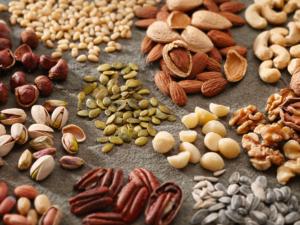
4. Berries, Berries, and More Berries
As one of the most nutrient-dense and fiber-rich fruits, you can relax and let your kids enjoy berries to their heart’s content.
Berries are the healthiest fruits—due in part to their colorful pigments. The same molecular characteristics that give berries their vibrant colors may account for some of their antioxidant abilities. Berries are second only to herbs and spices as the most antioxidant-packed food category. Overall, they average nearly 10 times more antioxidants than other fruits and vegetables.
Blueberries, strawberries, raspberries, and blackberries contain a long list of essential nutrients.
- The anthocyanidins in berries are known to cross the blood-brain barrier and support learning and memory centers in the brain.
- Berries contain lots of vitamin C, good for the immune system.
- Berries help to prevent the unwanted long-term effects of stress on human brain function.
- The tiny seeds in berries are a rich source of Omega-3 fats.
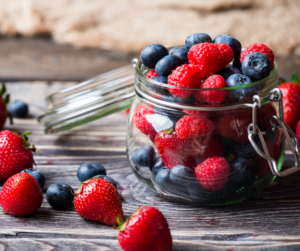
5. Calcium
Plant-based calcium is precisely what the body needs to help build strong bones and teeth for a growing child. You can find plant-based calcium in almost every vegetable. Specifically, cruciferous vegetables, dark leafy greens, broccoli, spinach, and bok choy are the best sources. If your child doesn’t want to eat his vegetables – use our quick solution! Add some raw (unpasteurized) melted cheese on top! Who can resist that?
And if you’re still not getting anywhere with your child, you can always supplement. Two of our favorite products are Calcium Lactate (awesome when you have a fever) and Min-Tran (great for calming a child before bed).

6. Omega-3 Fatty Acids
Until the antibiotic era, Cod Liver Oil was the #1 choice for parents when their kids got sick. Not only do Omega 3 oils nourish the immune system, but they also feed the brain, the eyes, and keep the heart in tip-top shape. The best way to get these in their diet is through fatty fish like salmon, chia seeds, flaxseed, or walnuts. They can also supplement with Calamari Omega-3 Liquid that has a clean, citrusy taste the kids won’t mind taking!
If you would like more information about how to keep your children healthy and vibrant, we’d love to help!
